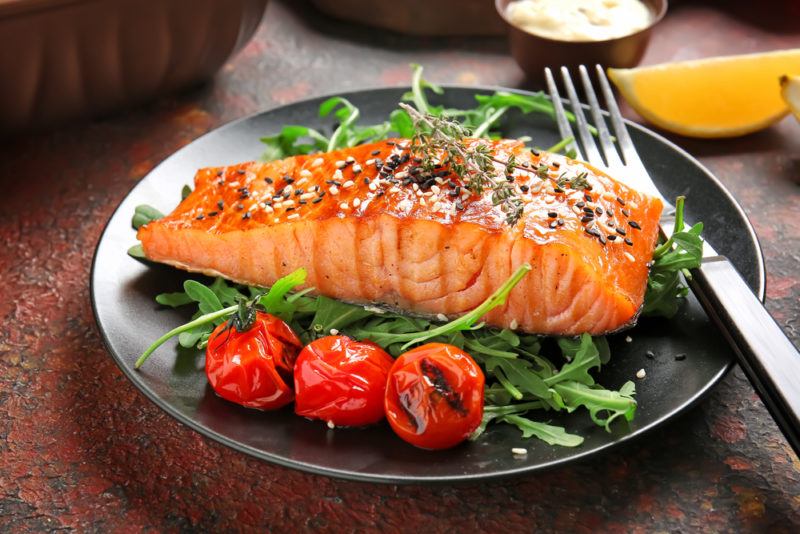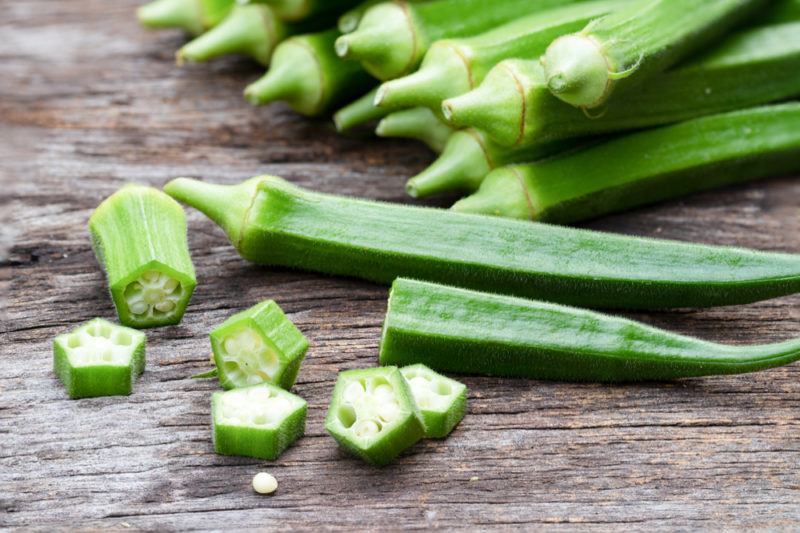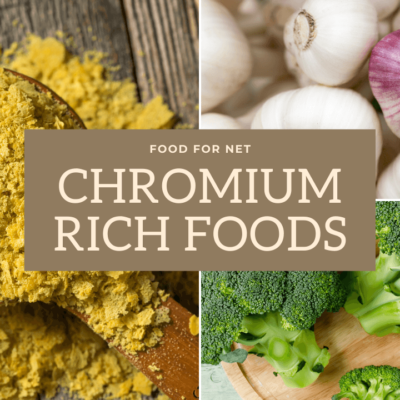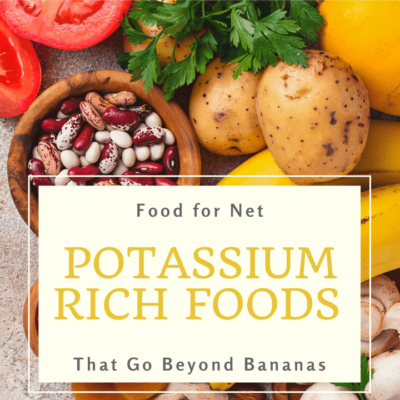
Calcium is an essential nutrient and like other vitamins and minerals, it plays many different roles in the body. The link between calcium and bone health is the one that most people are aware of, but did you know that calcium is also important for the function of your nerves, muscles, and even your heart? This is why calcium rich foods are so important.
You can get calcium through supplements too, but supplements are never as good as whole foods. Besides, the supplements industry isn’t well-regulated, so it’s hard to be certain that you’re actually getting what the label of the bottle advertises.
Dairy products are the most well-known source of calcium. So, if you eat a decent amount of dairy, you might already be getting more than enough calcium. If you don’t, then you’ll either need to eat more dairy or find other sources of calcium.
This list is a good place to start, as we’re featuring dairy and non-dairy sources of calcium. However, you may still find that you need to supplement calcium if you are ‘vegan‘ or lactose intolerant, as there are fewer suitable sources of calcium for you.
Calcium Rich Foods
Milk

It’s not surprising that dairy products are the preferred source of calcium for many people – they do contain a decent amount of the mineral. A 200 ml serving of milk will contain somewhere from 230 to 250 mg of calcium. The amount of calcium varies slightly depending on the fat content of the milk. Considering that milk and other dairy products are super common breakfast foods, it’s easy to get 25% or even more of your daily calcium requirements right when you wake up..
Interestingly, sheep’s milk ends up being higher in calcium than cow’s milk. This difference might be relevant to some people, although many of us only have easy access to cow’s milk.
Yogurt

Yogurt ends up being a good choice for calcium too. The amount of calcium varies more widely here, as there are so many differences in the way that yogurt is made and the other ingredients used.
Interestingly, while Greek yogurt is often thought to be a very healthy choice, it tends to contain less calcium than regular low fat yogurt. This happens because Greek yogurt is strained. The whey that is strained out of the yogurt is what contains much of the calcium.
This doesn’t make Greek yogurt a poor source of calcium, far from it. Greek yogurt might not have as much calcium as regular yogurt, but you are still getting some.
Cheese

It shouldn’t come as any great surprise that cheese offers a decent amount of calcium too. After all, a decent amount of milk goes into making cheese. This often means that cheese is a more concentrated source of nutrients from milk.
There are countless different types of cheese out there, not to mention all of the regional and manufacturing variations. These differences all influence the calcium content of the cheese.
But, in general, hard cheeses like cheddar and gruyere tends to be a powerful choice, often giving you around 240 mg of calcium in a 30 gram serving. Soft cheese often has less calcium and you may need a 60 gram serving to get a similar amount of calcium.
Fresh cheeses, like cottage cheese and ricotta offer less calcium again.
Of course, you shouldn’t be getting all of your calcium from cheese. Cheese is, after all, high in calories and in fat. Consuming too much of it could easily lead to weight gain and other health problems.
Sardines

Fish that has soft edible bones is another interesting source of calcium. The effect isn’t surprising. You are eating the bones of the fish, after all.
Sardines are the most obvious choice, as canned sardines often come with bones and they’re not too expensive. Sardines have other advantages too. For one thing, they contain a decent amount of omega-3 fatty acids per serving and have low levels of mercury.
Their mercury content is so low because sardines only feed on plankton.
Salmon

If you’re eating the bones as well, then you can focus on salmon as well as sardines. Canned salmon is the best choice here, as the bones in fresh salmon don’t tend to be soft enough for you to safely eat.
The calcium content for salmon is lower than for sardines. This means that salmon is a poorer choice for calcium, although there are other beneficial compounds present too. Salmon does also contain more mercury than sardines, so you’ll need to be careful about the amount of salmon that you eat.
Still, salmon is popular for health. It’s a meaty fish too, with an amazing flavor.
Some Other Fish

For that matter, any time where you are eating the bones of fish, you’ll be getting some calcium. Pilchards are another example and there may be local delicacies where you’re eating the entire fish rather than just the flesh.
Of course, you do need to take care. Fish bones often won’t be soft enough to eat – and trying to do so could cause serious harm. The bones can be sharp, after all.
If you’re unsure, try doing a little research first. Find out whether you can safely eat the bones and whether you should before you try anything.
Shrimp

While we’re on the topic of seafood, let’s talk about shrimp. Shrimp doesn’t contain as much calcium as many of the other options on this list, but it does contain some.
In particular, you’re looking at around 45 mg of calcium in a 150 gram serving of shrimp, versus 240 mg of calcium in a 60 gram serving of sardines.
Dairy-Based Foods

We mentioned milk, cheese, and yogurt before but in practice, any food that uses dairy will offer some calcium. The amount will depend on how much the dish relies on dairy. For example, custard and ice cream tend to be high in calcium, while meals like pancakes have less calcium per serving.
Sweet foods aren’t the only option either. Savory recipes often use dairy too. You can even add dairy to a recipe that doesn’t normally rely on it, such as stirring in a little milk or cream to thicken up a stew. Grating some cheese or crumbling some feta over top is another easy approach.
White Beans

Dairy, salmon, and sardines might be some of the most powerful choices for calcium, but they’re not an option for everyone. If you’re vegan or lactose intolerant, for example, many of the best calcium rich foods aren’t an option.
Thankfully, there are other choices, including white beans.
While many legumes contain some calcium, white beans are one of the best sources. You’re getting around 130 mg of calcium in 200 grams of the cooked beans.
Watercress

Watercress might seem like a fairly mundane vegetable, one that doesn’t have the same stunning reputation as options like kale. Yet, watercress is more powerful than it appears. It contains a decent amount of calcium, magnesium, iron, and even vitamin C.
Watercress also has a delicious peppery flavor that stands out in a salad or a sandwich. Plus, this little vegetable is often inexpensive and can be easily used. There’s no reason not to rely on watercress more often.
Wheat Grass And Barley Grass

Do you remember wheat grass shots? They were incredibly popular at one point in time, as a concentrated source of nutrients, even though the shots don’t taste all that good.
While the craze surrounding the shots has largely disappeared, their advantages for health remain. So, it’s hardly surprising that both wheat grass shots and barley grass shots provide you with some calcium.
If it’s your first time trying such shots, then barley grass is the best place to begin. It has a milder flavor, which makes it a little easier to get down.
Just don’t overdo it. A common recommendation is no more than two ounces of the shot per day. After all, shots like this are highly concentrated.
Kale

While the hype surrounding kale was excessive at one point, there’s no denying that the leafy green has benefits. The calcium content is one advantage, as you’re getting roughly 32 mg of calcium in a serving size of 50 grams of raw kale.
This might not sound like much calcium for the amount of kale. Still, 50 grams of raw kale isn’t all that much once you’ve cooked the vegetable. It can then easily be eaten as a side dish or included in a recipe.
Broccoli

Green vegetables are interesting. They’re all a good source of nutrients, but the nutrients present vary dramatically from one type to another. For example, broccoli and kale are both decent sources of calcium, while spinach doesn’t contain much at all.
In the case of broccoli, you get around 112 mg of calcium for a 120 gram raw serving of the vegetable. This gives you more calcium per serving with broccoli compared to kale, although broccoli doesn’t cook down in the same way.
Thankfully, there are many different ways to use broccoli. Some keto recipes even use the vegetable in creative ways, like broccoli crust pizza.
Bok Choy

Bok choy is a useful choice, as it is a little bit different than the greens that we tend to use. It isn’t as appealing as kale for calcium, as you’re just getting around 20 mg of calcium in the same serving size.
Still, getting variety in your diet is important. Bok choy offers a different balance of plant-based compounds and nutrients than you will find with kale, which is reason enough to try the vegetable.
Okra

Speaking of interesting vegetables, okra is another green that you can rely on. The vegetable is a seed pod, with a long and slender shape. It sometimes goes by the name lady’s fingers.
Okra is unusual in many ways. For one thing, it can easily end up slimy when cooked. Even when cooked well, the vegetable has a silky quality that some people love and others hate.
Using the okra in stews and soups is a popular choice. Here, the vegetable helps to thicken the meal.
The flavor of okra is unusual too. It is similar to green beans or perhaps eggplant, yet the flavor is also distinctive to okra. You’ll need to try it for yourself to truly get a sense of the vegetable.
Finally, the way that you cook okra strongly influences the end result. If the vegetable is slow cooked, for example, it ends up being tender, while cooking it quickly produces a crisper outcome.
Almonds

While nuts aren’t an amazing source of calcium, most of them do contain at least a little of the mineral. Almonds are by far the best choice, offering more than twice as much magnesium per serving as many other nuts.
Plus, almonds are often thought to be the most nutritious nut. They do have an amazing balance of vitamins and minerals, and are popular for their protein and healthy fats too.
It’s easy enough to simply snack on the nuts, but if you want more options, you could try almond butter. Good-quality almond butter will be mostly made up of almonds, so you’re getting the same nutrients, just in a different form.
Almond milk, on the other hand, generally won’t be as appealing. While almond milk uses almonds as an ingredient, the drink mostly consists of water. You’ll get more nutrients if you make almond milk yourself, but even then, the calcium content won’t be amazing.
Fortified almond milk will provide you with more calcium. This can be useful, as long as you don’t mind relying on fortified foods.
Seaweed

Seaweed is interesting for the compounds that it offers, along with its nutrients. After all, seaweed is grown differently than conventional plants, so it’s hardly surprising that the compounds present are different too.
Interesting, seaweed can be a source of protein too. It doesn’t contain as much protein as meat or legumes, for example. But, seaweed is very low in calories, which leads to a good balance of protein and calories.
Some people use seaweed mostly for health benefits, while others enjoy the flavor of seaweed too. Seaweed snacks are an easy way to enjoy seaweed regularly. You can also cook seaweed and use it in many recipes.
All types of seaweed will provide you with calcium and wakame is an especially good choice. It also has a strong flavor and interesting texture. This makes it a popular ingredient in salads and in soups.
Soybeans

Soybeans are widely used as a source of plant-based protein, but this is far from their only claim to fame. Soybeans also happen to contain a decent selection of nutrients – including calcium.
These beans are also an easy way to increase your calcium intake, as they are used in so many different ways. For example, many vegan products use soybeans as a base ingredient. This includes options like tofu and more heavily processed meat alternatives.
You can also roast soybeans as a snack or enjoy immature soybeans in the form of edamame. Fermented soy dishes are an option too, such as natto and miso soup. The fermentation may help improve your balance of gut bacteria too, while also making the beans easier to digest.
Soy milk is another option. While some other soy foods are a more concentrated source of soy nutrients, soy milk is appealing as it can be easily added to recipes. Some companies also fortify their soy milk with calcium (to make it more similar to regular milk), which gives you more bang for your buck.
Fortified Plant-Based Milk

Plant-based milks generally try to mimic milk as much as possible, which sometimes means that they’re fortified with calcium as well. This is particularly true for soy milk, as there are now many different variations of soy milk to choose from, including versions that have been fortified with protein and ones that include extra calcium.
Closely reading the ingredients labels of products can help you work out the best choice for your needs.
Oranges

While calcium isn’t a common feature in fresh fruit, some fruit does contain a little of the mineral. Oranges are the single best fresh fruit for calcium. You’re getting roughly 60 mg of calcium in a medium orange.
This means that you can also get some calcium in orange juice. However, you do need to be careful with orange juice, as it is high in sugar. This means that you get a high dose of sugar from a glass of orange juice, with relatively few other nutrients.
At the very least, it’s worth focusing on orange juice that contains pulp. This way you’re getting some fiber from the drink.
Currants

Dried fruit is a concentrated source of the nutrients from fruit. You’re getting more phytonutrients and vitamins per gram than with any fresh fruit.
For currants, you’re getting roughly 72 mg of calcium in a 120 gram serving of currants. Currants aren’t that common as a fruit to snack on, but they’re easy to use in cooking.
Raisins

Raisins are another interesting choice. These are simply dried grapes, which means that they’re rich in polyphenols (especially if you focus on red grapes). Raisins are also an easy snack, which gives you a simple way to boost your calcium levels.
Figs

Dried figs are the final type of dried fruit that we’ll talk about. While all types of dried fruit will provide some nutrients, currants, raisins, and figs are the best choices.
However, you do need to be careful with portion sizes. Dried fruit isn’t just a concentrated source of nutrients. It is also a concentrated source of sugar. That sugar comes from fruit, true, but sugar still isn’t all that good for you.
Rhubarb

Here’s one more vegetable to round the list off. Rhubarb is unusual, as it is a sweet vegetable, one that is often included in sweet dishes, such as rhubarb crumble.
You can even eat rhubarb raw. If you do this, try dipping the rhubarb stalk in something sweet, like honey or agave syrup. This helps to mellow the slight tartness of rhubarb.
It’s also one you need to be careful with, as rhubarb is high in oxalates. This means that you shouldn’t eat too much rhubarb at a time. Make sure you avoid the leaves of the plant too, as these are poisonous.

















 21 Keto Coffee Smoothie Recipes For A Tasty Start To The Day
21 Keto Coffee Smoothie Recipes For A Tasty Start To The Day
Leave a Reply